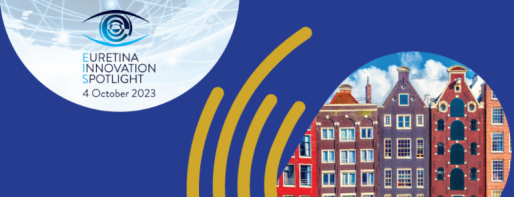Evidence of burgeoning research to develop new medical therapeutics for retinal diseases was strong at the EURETINA Innovation Spotlight (EIS) where two 75-minute sessions were devoted to innovation in medical therapy.
During the dual sessions, speakers representing 13 companies took to the podium to showcase their company’s pipeline, and panel discussions at the end of each session gave other industry leaders the opportunity to highlight their research.
The innovations discussed encompassed a gamut of indications, alternative routes of drug delivery, including topical administration, and different types of molecular entities that are based on both existing and novel mechanisms of action. As an underlying theme, however, the innovations were all designed to address unmet needs and provide solutions to existing challenges in order to preserve vision and improve quality of life for patients with retinal diseases.
The treatments presented included therapies targeting wet age-related macular degeneration, geographic atrophy secondary to age-related macular degeneration, diabetic eye disease, and inherited retinal dystrophies. Speakers reviewed outcomes from studies spanning the range from preclinical investigations to pivotal trials, including very recently published results and late-breaking findings that will be presented in the upcoming EURETINA Congress and at the American Academy of Ophthalmology meeting in November.
Speakers from regulatory authorities presented their personal thoughts on aspects of clinical trial design, including developing and validating biomarkers and surrogate endpoints to demonstrate efficacy. Discussions in which session moderators directed questions to the speakers and panelists probed opinions on the challenges of working with regulatory authorities. The discussions also sought ideas on demonstrating benefit to payors once novel treatments are approved, how to gain their adoption by clinicians, and guiding treating physicians to select appropriate patients.
At the conclusion of the two sessions, attendees should have been left with no doubt that medical therapy for retinal diseases has a very bright future.
View the EIS photo gallery here


